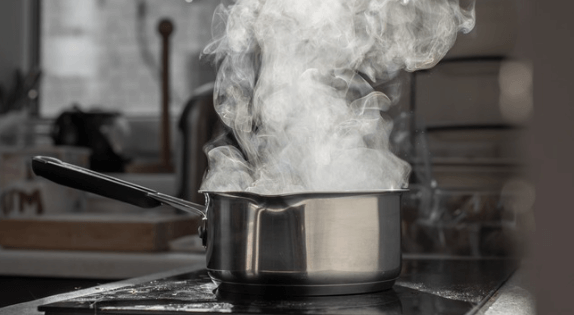Seafood boils are a beloved tradition in many coastal regions, celebrated for their communal spirit and delicious results. Whether you’re planning a casual family gathering or a festive summer party, choosing the right boiling pot is crucial to ensuring your seafood boil is a hit. In this guide, we’ll explore the various types of pots you can use for a seafood boil, discussing their pros and cons and helping you make the best choice for your needs.
Why the Right Pot Matters
Before diving into the different types of boiling pots, it’s important to understand why the right pot matters. The pot you use can impact:
· Cooking Time: A pot that heats evenly will cook your seafood more efficiently.
· Flavor: Certain materials can impart subtle flavors to your boil.
· Capacity: The pot needs to be large enough to accommodate all your ingredients.
· Ease of Use: Features like handles and lids can make the cooking process smoother.
With these factors in mind, let’s explore the different types of boiling pots available.
Stainless Steel Pots
Pros
· Durability: Stainless steel pots are incredibly durable and resistant to rust and corrosion, making them ideal for frequent use.
· Even Heating: High-quality stainless-steel pots offer excellent heat distribution, ensuring your seafood cooks evenly.
· Non-Reactive: Stainless steel doesn’t react with acidic ingredients, so it won’t affect the flavor of your seafood boil.
Cons
· Weight: Stainless steel pots can be quite heavy, especially when filled with water and ingredients.
· Cost: They tend to be more expensive than pots made from other materials.
Best Use Case
A stainless-steel boiling pot is perfect if you’re looking for a reliable, long-lasting option that can handle large quantities of seafood.
Aluminum Pots
Pros
· Lightweight: Aluminum pots are much lighter than their stainless-steel counterparts, making them easier to handle.
· Cost-Effective: They are generally more affordable than stainless steel pots.
· Good Heat Conduction: Aluminum heats up quickly and distributes heat evenly, which is ideal for a seafood boil.
Cons
· Reactivity: Aluminum can react with acidic ingredients, potentially altering the flavor of your boil.
· Durability: While durable, aluminum is more prone to dents and scratches compared to stainless steel.
Best Use Case
An aluminum boiling pot is a great choice if you’re looking for an affordable and lightweight option, especially for occasional use.
Enamel-Coated Pots
Pros
· Aesthetics: Enamel-coated pots come in various colors and designs, making them visually appealing.
· Non-Reactive: The enamel coating prevents reactions with acidic ingredients, preserving the flavor of your seafood.
· Heat Retention: These pots retain heat well, ensuring your seafood stays hot even after cooking.
Cons
· Fragility: The enamel coating can chip or crack if not handled carefully.
· Weight: These pots can be quite heavy, especially larger ones.
Best Use Case
Enamel-coated pots are ideal if you want a stylish and functional pot that won’t react with your ingredients.
Cast Iron Pots
Pros
· Heat Retention: Cast iron retains heat exceptionally well, which is great for keeping your seafood hot.
· Durability: With proper care, cast iron pots can last a lifetime.
· Flavor:Some cooks believe cast iron enhances the flavor of the food cooked in it.
Cons
· Weight: Cast iron pots are extremely heavy, making them difficult to move, especially when full.
· Maintenance: They require regular seasoning to prevent rust and maintain their non-stick properties.
· Heating Time: Cast iron takes longer to heat up compared to other materials.
Best Use Case
A cast iron boiling pot is perfect for those who value durability and heat retention and are willing to sacrifice weight and maintenance.
Copper Pots
Pros
· Excellent Heat Conduction: Copper pots heat up quickly and distribute heat evenly, providing precise temperature control.
· Aesthetics: Copper pots are visually stunning and add a touch of elegance to any kitchen.
Cons
· Cost: Copper pots are among the most expensive options.
· Maintenance: They require regular polishing to maintain their appearance.
· Reactivity: Copper can react with certain ingredients, so these pots are often lined with another metal, like stainless steel.
Best Use Case
Copper boiling pots are ideal for those who want superior heat conduction and are willing to invest in a high-quality, visually appealing pot.
Features to Look for in a Seafood Boil Pot
Size and Capacity
When selecting a boiling pot, size and capacity are paramount. For a seafood boil, you’ll need a pot that can comfortably accommodate all your ingredients, including seafood, corn, potatoes, and sausage. A pot with a capacity of 30 to 40 quarts is usually sufficient for most home gatherings. If you’re hosting a larger event, consider a 60 to 80-quart pot.
Handles
Sturdy, heat-resistant handles are essential for safely lifting and moving a heavy hot pot. Look for pots with riveted handles, as they offer added durability and security.
Lids
A well-fitting lid helps retain heat and speed up the cooking process. Some pots come with vented lids to allow steam to escape, which can be useful for preventing overflows.
Built-in Strainer or Basket
A built-in strainer or basket can make it easier to remove your seafood and other ingredients from the boiling water. This feature is particularly useful for large boils, as it saves time and effort.
Heat Source Compatibility
Ensure that the pot you choose is compatible with your heat source. Most pots work well on gas and electric stoves, but if you’re using an induction cooktop or an outdoor propane burner, double-check compatibility.
Additional Tips for a Successful Seafood Boil
Prepping Your Ingredients
Before you start boiling, make sure all your ingredients are prepped and ready to go. Clean and debeard your shellfish, cut your vegetables into uniform pieces, and gather your seasonings.
Layering Ingredients
Layer your ingredients in the pot based on their cooking times. Start with the ingredients that take the longest to cook, like potatoes and sausage, and add the seafood towards the end to prevent overcooking.
Seasoning
Season your water generously. A traditional seafood boil seasoning mix usually includes Old Bay, garlic, lemon, and bay leaves. Don’t forget to salt the water well; it should taste like seawater.
Monitoring the Boil
Keep an eye on the pot and adjust the heat as necessary to maintain a steady boil. Stir occasionally to ensure even cooking.
Serving
Once your seafood boil is done, drain the water and transfer the ingredients to a large serving tray or directly onto a covered table. Serve with melted butter, lemon wedges, and additional seasoning on the side.
Conclusion
Choosing the right boiling pot is a key step in ensuring a successful seafood boil. Whether you opt for the durability of stainless steel, the affordability of aluminum, the aesthetics of enamel-coated pots, the heat retention of cast iron, or the superior heat conduction of copper, there’s a pot out there that’s perfect for your needs. By considering factors like size, handles, lids, and additional features, you can find a pot that will help you create delicious, memorable seafood boils for years to come. So, gather your ingredients, fire up the stove, and get ready to enjoy a fantastic seafood feast with family and friends!


